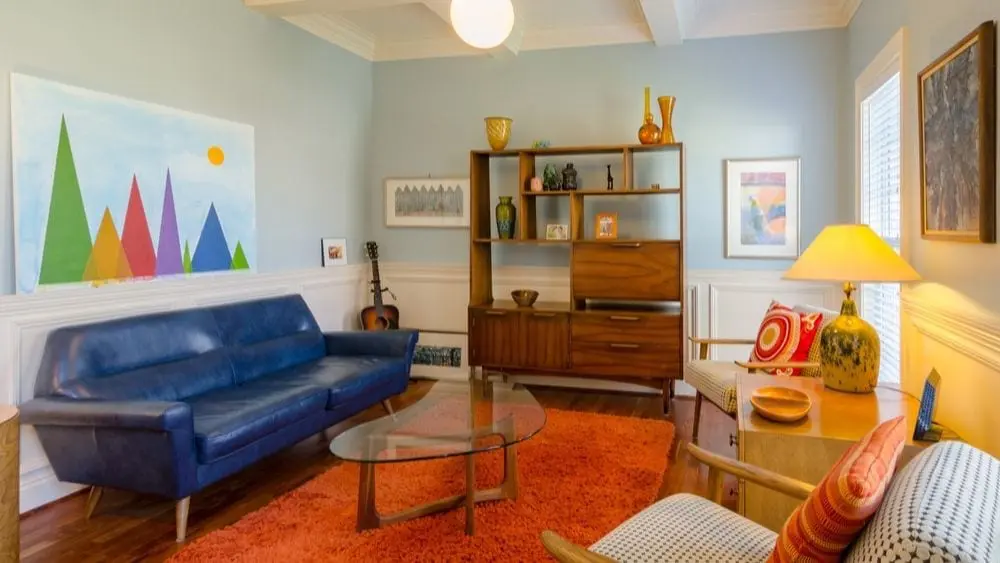
When it comes to design in home and office settings, it seems you don’t have to look too far to find both modern and contemporary design.
Given that these two popular aesthetics are often mixed, many people may have trouble distinguishing between the two. The fact is, although the words modern and contemporary are often used interchangeably to describe design themes, the two styles are not the same.
Let’s set the record straight. What is the difference between modern and contemporary design?
History of Modern Design
Mark Cutler, owner of Mark Cutler Design in Los Angeles, Calif. says modern design was developed at the beginning of the 20th Century, beginning with the Bauhaus design school in Germany. What began as an architectural style ultimately became a way of looking at the world, as the modern style evolved to include applications in interiors, art and even literature. Cutler says that although modern design is now called many different things, “most notably it is called early 20th-Century design.”
Modern design bore stark contrast to the more ornate classical styles, embracing the motto “Less is more,” says Cutler. In design, this translates to more simplicity, with clean lines and pieces that focus on function.
What is Contemporary Design?
Contemporary design, on the other hand, “literally means existing right now, in the moment. Contemporary design is dynamic, fluid and constantly changing,” says Ashley Barnett Griffith, a registered interior designer and senior business development manager at office furniture manufacturer Haworth based in Holland, Mich.
“Here you will see people exploring style through the use of new materials and innovative techniques,” notes Cutler.
Both designers point out that since contemporary design is an of-the-moment, ever-evolving aesthetic, it may incorporate elements from a variety of design genres including modern, postmodern, futurist, art deco and more.
Contemporary design celebrates balance and incorporates a bit more flair and whimsy than its stark counterpart modern design. Let’s look at each style in more detail.
Characteristics of Modern and Contemporary Designs
A modern living room with white furniture and natural wood table and lamp.Surely, there are many similarities and overlapping characteristics between the two styles — hence the confusion.
“Both contemporary and modern styles tend to lean toward simple spaces with smooth, clean lines and neither style accepts heavy or ornate elements,” Barnett Griffith says. However, there are, of course, some key differences.
In classic modern design, you will often find a clean, neutral color palette and heavy use of “fresh, natural materials such as wood, leather and light linens,” says Barnett Griffith. “Modern furniture is often raised from the floor to allow a sense of airiness and tends to be made with molded plywood, polished metals and plastic,” she says.
Cutler adds that modern design favors solid colors over patterns and that pieces may have a “more machine-made quality” to them.
By contrast, contemporary style incorporates more curves, colors and interesting shapes. In contemporary design, you’ll find more soft materials such as rugs, throw pillows and blankets for an added feeling of comfort. While modern design shies away from clutter, a contemporary space may include a few artistic accessories to offer a unique flair.
Right now in contemporary design, we’re seeing a lot of natural materials mixed with concrete, steel and other industrial-inspired materials. However, what is called contemporary design in 10 years may look and feel completely different.

Rebecca Rosenberg is a freelance copywriter, digital media strategist and world traveler. After working in marketing for some of Austin’s most beloved brands, Rebecca started her own business and left Texas behind to travel the world. You can find her currently bumming around Europe. Often flying solo, she has visited over 35 countries and lived abroad in four. In addition to being a digital nomad, Rebecca is an avid hiker, design enthusiast and certified plant nerd. She speaks English, Spanish, German and Korean.
 Home Style Guides: Spanish Style Homes
Home Style Guides: Spanish Style Homes